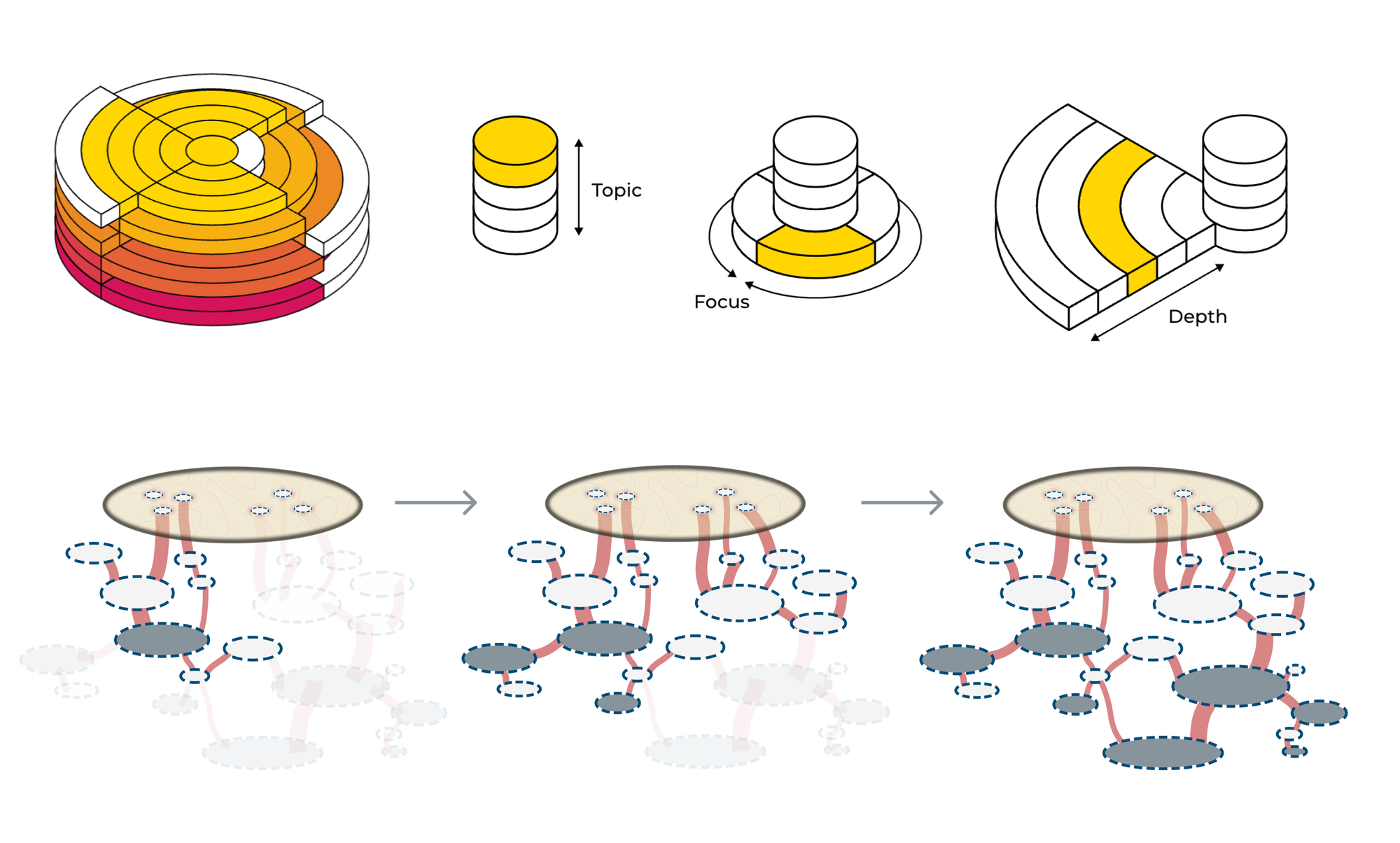Through a decade of work where interviews are a core and ongoing activity, each new interview remains a source of stress, reward, consternation, anticipation, and even pride.
In interviews we unearth new perspectives, shine light on motivations and intents, collect contexts, and uncover stories and fears and hopes. We do so because we're after something: all good research has a driving question, connecting back to a larger personal or organizational intent.
The interview works because the interviewee offers perspective and personal experience. The material we navigate is the substrate of conversation and shared understanding. We find veins of ore that provide raw insight, later smelted down into patterns of activity and insight.
The interviewee gives their gift of experience and receives in turn attention. Through the lens of another, they examine their experience along unexplored avenues. So long as the interview is no staged exhibit or mechanical survey, they uncover and see themselves anew through the shared exploration.
And yet, there is danger present for the interviewee. Armored in privilege, unwitting interviewers give ground to live wires of distress and slice through cultural norms. Overworked and unprepared interviewers brandish the sharp edge of their intent outside the scabbard of respect and care. The primary question is not how the interviewer's actions may affect the interviewee, but whether the interviewer has gotten what they need.
We face a consistent tension. Despite its empathetic roots and human ideals, the profession of user experience research transacts in extracted insights for cash. Researchers harvest experience. We synthesize it into patterns, provocations, and strategy then feed it as fuel into the insatiable product development machine.
And yet, the work is remarkable. We are all particles of personal experience. Interviews illuminate waves of our collective truth.
There is joy in listening, uncovering, and exploring together. When we navigate that shared substrate of experience as a copilot, as we become an apprentice to the master who illuminates her private world, new wavelengths of light enrich the world we thought we knew.
Masters of the craft like Robert Caro and John McPhee use interviews to weave rich truths of life into new fabric. The sprawling and rippling reality of oranges. The generous and sparse life in the Pine Barrens. The legislative wizardry and corruption of ideals that drove Robert Moses’ terraforming of New York.
Without that driving question or guiding intent — with no "thing" to be created on the other side — our discourse falls into another category, a separate but similar joy: conversation.
But our interviews have intent. They are an attempt to get something in the end, no matter how we may frame them. At the least, we can choose how we engage in that act. We decide how we treat our interviewees. We determine how the experience they share carries forward in our work.

Over the last few months, I've been in conversation with Lisa Koeman about our work: what interviews do and what they look like. We built two conceptual views, Lisa's Navigating Interviews based on a systematic model, and my Shape of Interviews based on an anthill metaphor. We'd love to know what you think as we explore further.
Until next time—
This is Loops and Cycles, a mailing list exploring how we work together and make good things.


![Interviewing Intent [LC15]](/content/images/size/w100/2024/11/models-without-text.png)
